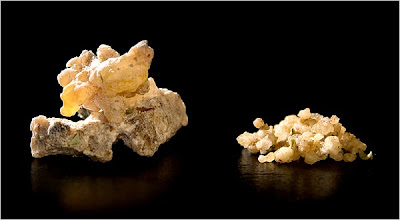
The New York Times says Biblical manna is being rediscovered by modern gastronomes.
"...as miraculous as its biblical apparition may seem, manna is real and some chefs have been cooking with it. The dozens of varieties of what are called mannas have two things in common. They are sweet and, as in the Bible, they appear as if delivered by providence, without cultivation.
"Most of this manna is either dried plant sap extruded from tiny holes chewed out by almost invisible bugs, or a honeydew excreted by bugs that eat the sap. Rarer are the mannas not from sap, including Trehala manna, the sweet-tasting cocoon of the Larinus maculates beetle from Turkey; and manna-lichen (Lecanora esculenta), which occasionally dries up and blows around to form semisweet clouds out of which manna settles into drifts from western Greece to the central Asian steppe.
"Mannas form best in extremely dry climates — like the Middle East’s — where sap oozes at night and dries up in the morning. The favored theory on what the Israelites called manna is the sap of a tamarisk tree."
The idea is not as revolutionary as it first sounds. Rabbi Yosef Hayim of Baghdad mentions a type of food named manna (the blessing for which he says is "shehakol" since it does not grow on a tree or from the ground) in his famous work "Ben Ish Hai" (Year One, Matot, para 3). However, he does not comment of how - if at all - it may be connected with the biblical food.
No comments:
Post a Comment